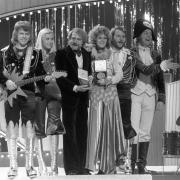Conceding that his bungee-jumping days may be over, and marvelling at the ever-decreasing age of policemen, Clive Agran takes a deep breath and enters the world of bowls.
Although the bald pate, creaking knees, fondness for going to bed early, dislike of Big Brother, failure to understand the appeal of grotesque tattoos and inability to name even one record in the top ten would suggest I have reached an age of indisputable maturity, I nevertheless think of myself as essentially young. For example, despite 40 fulfilling years knocking out articles, I still genuinely wonder what I’ll do when I grow up and am surprised when served a pint in a pub not to be asked for proof of my age.
Thankfully ageing is a gradual process and despite the fact that breakfast seems to come round nowadays with alarming frequency, physical deterioration occurs almost imperceptibly. Although it takes me longer to recover, I can still run for a bus and frequently watch the cricket highlights on TV without dozing off.
Having gone well beyond the point where policeman seem very young, I have now reached an age where both Popes and Presidents of Russia strike me as comparatively youthful, which is very worrying. Since I’m neither Catholic nor Russian, I don’t know why the thought that I might never live to see the present incumbents’ successors should bother me, but for some reason it does.
Similarly worrying is a growing interest in bowls, because bowls has always struck me as the quintessential oldies’ game – the last stop on the sporting line. Does what began with hopscotch, marbles and hide and seek; grew through football, cricket and tennis; matured into golf come to an abrupt halt on a rectangular piece of remarkably flat turf?
To find out, I’ve dragged my weary body along to Staplecross Bowls Club to meet Chris Barlow, the captain, and some of his bowling friends, all of whom are, how should I put it, of more or less the same vintage as I am. Chris explains that the club was founded in 1971 when Ted Heath was Prime Minister, 19s 6d was dropped in favour of 97.5p and Mick Jagger was belting out Brown Sugar. Meanwhile, a philanthropic Mrs Pierce was generously donating a patch of ground on the edge of the village to the nascent bowls club.
Today it has about 60 playing members who pay an extraordinarily modest £35 a year subscription. For that, they can bowl as often as they like from late April to mid-September. The only other expense is a £2 match fee and that includes tea and biscuits afterwards! The club is able to keep the subs low because everyone contributes to the upkeep of the place. Clearly the most prestigious job is the maintenance of the hallowed ‘green’ and Tony Woodall and Brian Scowen share that awesome responsibility.
A no-nonsense journalist with a hard-earned reputation for tackling tough issues head on, I come straight to the point and ask if bowls is an old-man’s game. “Recruiting younger members is hard,” confesses Chris. “It’s perhaps easier for some of the coastal clubs where there are more young people about. We’d love more youngsters but it’s difficult for a rural village club like ours to attract them.” To my surprise and their credit, Staplecross Bowls Club is totally non-discriminatory as regards sex. “All our leagues are mixed, as are all our teams,” reveals Chris.
Eager to recruit new members, the club invites beginners to come along on a Friday evening to have a go. Bowls are provided, all you need is a pair of flat shoes. And so I step gently on to some of the softest and greenest turf in Sussex and pick up a bowl for the first time in my not-so-young-life. Vice-captain Terry Rogers is going to explain everything to me. So, Terry, how much do bowls cost? “A new set of four will set you back somewhere between £150 and £200. But you can buy them second-hand for as little as £40.”
The first misapprehension I was labouring under is that bowls are made of wood. They were, back in the days of Sir Francis Drake, but nowadays they’re made of a hard plastic composite material. They also come in seven different sizes, a variety of weights and sport different grip-aiding patterns. They are biased, of course, and the first thing to learn is which way they’re going to swing.
Terry rolls the white ball (jack), which has to travel at least 23 metres. This is a bit disappointing as I had hoped a traditional game like bowls would at least have used a mediaeval measure such as a rod, poll or perch. Chris, who’s standing at the other end, moves the jack laterally so that it’s straight in front of us. Remembering to keep at least one foot on the mat at all times, I let go of my historic first bowl. Although arrowing in on the jack, it wobbles to a dismal halt the best part of a rod, poll or perch short. Terry’s, on the other hand, is drawn to the target as if by magnets and he is, as we say, ‘lying one’.
Fortunately, no one’s keeping score, which is as well since I suspect the first end, as it’s called, is a whitewash, or perhaps they call it a blackout. Although evidently struggling, I can nevertheless appreciate the pleasure the game gives. What readily distinguishes it from, say, football, rugby or taekwondo is that close proximity to the other participants combined with an absence of breathlessness makes for easy conversation.
Because I’m eager to learn everything there is to know about the game, the chat is about bowls; the rules, etiquette and all that sort of stuff. Did you, for example, know that three-player teams (triples) is the most popular format and each man or woman has their own area of responsibility? Number one brings the balls back, number two measures whose ball is nearest and number three is skipper and chief tactician.
In a match, which usually comprises 18 ends and lasts about two-and-a-half hours, each side will normally put out four teams of three. Each winning team receives two points and then the four final scores are aggregated and two further points are awarded to whichever side has scored the most. In theory, therefore, you can lose three matches by a narrow margin but win the fourth by a mile and pick up these two bonus points. Not that they will do you much good, however, because you will have already lost.
I’m now down the other end discussing the dress code (grey tailored shorts or long grey trousers, white shoes and shirts for men and something rather similar for women) with Chris and once again find myself in a seemingly desperate situation. My final bowl, however, squeezes between the enemy’s, nestles next to the jack and is the very stuff of which old men’s dreams are made. Although not sure whether etiquette permits displays of triumphalism, I let out an exultant yell. Having restored a measure of pride, I suspect I should now retire gracefully from the green arena but everyone here is so friendly and the game so gently beguiling that I might just stump up 35 quid and return before I get too old even for bowls.
Staplecross Bowls Club, Northiam Road, Staplecross, East Sussex TN32 5QH, staplecrossbowls.com, terry.rogers@lineone.net, 01424 428734



























